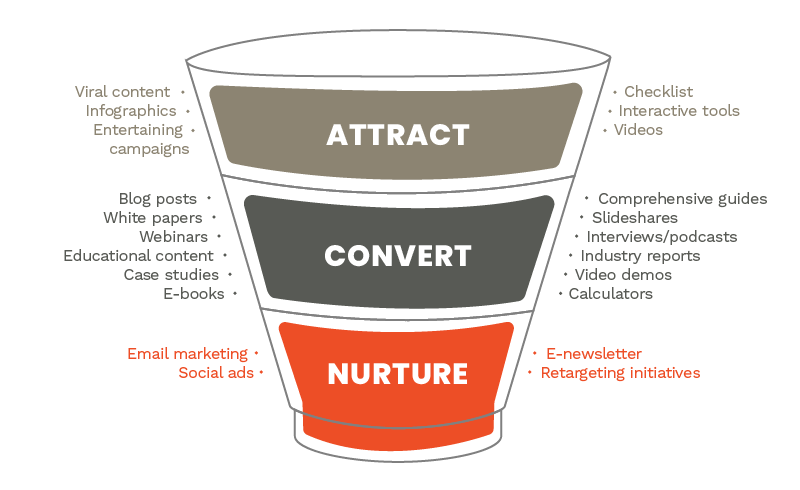Disclaimer:
While this post discusses key aspects of content marketing, please note that War Room does not offer content marketing services. However, we believe in a holistic digital approach, where various tactics like paid, social, SEO work together to complement your overall marketing strategy. Our focus is on programmatic advertising, using data-driven strategies to optimize paid media campaigns. If you’re looking to boost your ad performance, we’re here to help!
Producing content is a crucial part of the marketing strategy for many companies. It’s often the only way to kickstart organic search as a viable traffic channel. And creating content leads to the acquisition of backlinks, which move the whole website up in the search engine results pages.
On top of that, good content builds your brand’s authority and helps with lead generation. And that’s not the only business goal content helps to achieve.
This poses a unique challenge for the content team. The content they produce has to be optimized for search engines and provide a lot of value to the reader. More often than not, these two content production aspects are considered separate. However, that is not the case!
Search Engine Optimization (SEO), keyword research, in particular, can provide helpful insights into what creates value in a piece of content. If you analyze the keywords your content is going to be focused on and correctly optimize for search intent, you can match exactly what the user is looking for, increasing content quality.
How do you optimize content for search intent and incorporate keyword research into the content strategy? Read on, and you’ll find all the answers!
What is Search Intent?
So, what is search intent exactly? Each time a Google user searches by entering a keyword, they intend to find something specific. This aim behind the keyword is called search intent.
A person doing a search may be trying to buy something. Or they could be looking for a buyer’s guide or a review. Alternatively, they could also be looking for information about something without intending to buy.
Some keywords have a pretty clear intent, like “buy a treadmill in AZ” or “how many grams in a kilo.” Other keywords might require a bit of research to understand the user intent.
If you focus a piece of content on a keyword that you don’t know the intent of, you risk having a high bounce rate on the page. The users won’t see what they were looking for and will click back to the SERP to look elsewhere.
Types of Search Intent
There are countless possible search intents. Sometimes, one keyword may have several search intents. However, all search intents can be categorized into four main types: informational, navigational, transactional, and commercial keywords.
Transactional
Transactional keywords are those that are used with the intent of making a purchase. You can easily understand when the word is transactional because many will have the word “buy” in them. In many other cases, when people look for the name of a product or service like “red door mats” or “branding services,” they intend to make a purchase. In such cases, the search engine may assume these are transactional keywords and offer products instead of reviews or blog articles.
Commercial
Sometimes, these keywords are commercial in nature. This is when a user doesn’t want to buy at the moment but is going through an investigation about the product or service. In many cases, commercial intent keywords will be supplemented with phrases or words that narrow the search down, like “best red doormats” or “branding services companies reviews.”
Navigational
The search intent behind navigational keywords is finding a specific website or page. “Amazon” or “War Room careers” are considered navigational keywords because when users type them into the search engine, they want to see a specific website or page. It’s important to rank for these when your brand is mentioned.
Informational
The last type of search intent is informational. Users who search for these keywords want to learn something. These keywords can be long and specific, like “how to maintain brand integrity,” or very short, like “brand integrity.” In the case of the latter, Google is likely to show pages explaining what brand integrity is and why it’s essential because users with transactional or commercial intent will likely include keywords that narrow the search down.
How to Determine Search Intent
Not all keywords have a clear user intent. Shorter keywords may be construed differently by the search engine and the user, and it’s even harder to understand the search intent of longer keywords with informational intent. Since your content must fit the search intent, the first step in producing any content or page is to understand the keyword search intent. Leading digital marketers leverage SERP API to analyze large-scale search data patterns, identify content gaps, and track ranking fluctuations across multiple informational keywords in their niche.
Here’s how you can do that for any type of keyword.
1. Analyze the Top of the SERP
The first step towards understanding the user intent behind a keyword is to look at the Search Engine Results Page (SERP). Google is pretty good at understanding keyword search intent, and if the keyword has a decent amount of traffic, the search engine already has a vision of the best answer. The results page will be the most straightforward way to determine what the intent is.
Let’s take a look at the SERP for two terms, “brand identity” and “brand integrity.” The first search result for “brand identity” is a company with that term as its name.
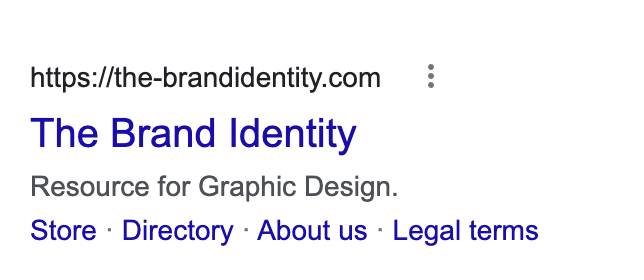
Naturally, people who are looking for that specific company display a navigational intent. But that’s useless in terms of search intent optimization. And most people looking up “brand identity” probably have something else in mind.
The majority of results in the SERP are informational articles explaining what brand identity is.
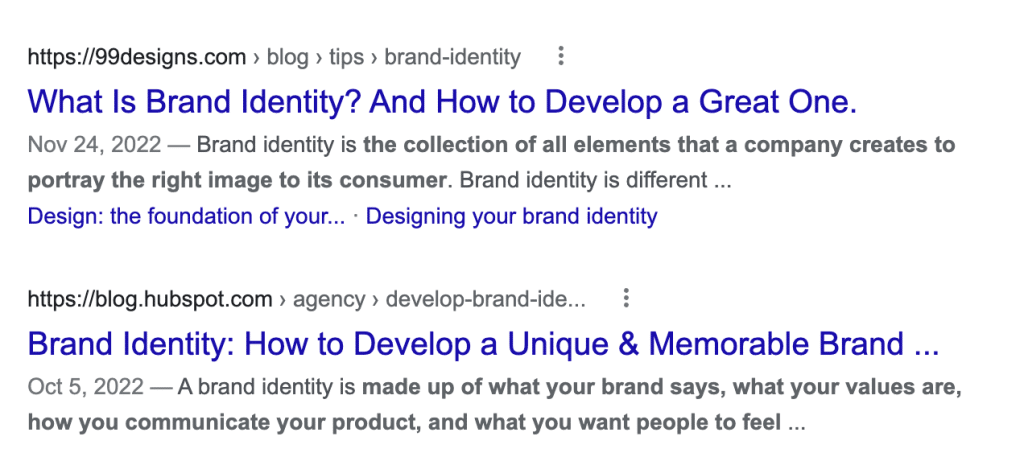
The same appears on the SERP for “brand integrity.” The majority of the results are informational articles explaining the concept.
If you’re working with informational keywords and want to optimize content for search intent, you have to go a step further than the SERP and take a look at the content from the search results. Look at what topics this content brings up apart from covering the main keyword, how it’s done, and what helpful resources the articles provide.
Incorporate this into the content strategy and plan to improve the existing material. You can explain the concept in more depth, add sections with how-tos or case studies, or add interactive elements and visual aids produced by your team. Or you can go down a different route and write about the content from another angle entirely.
Navigational keywords are not hard to optimize for – as long as you mention the name of your company in the title, meta description tag, and H1’s, and have a bit of backlink, you’re almost guaranteed to rank for your brand searches.
The same goes for transactional intent. Search intent optimization should go no further than showing that the intent is transactional and making the title and meta description correspond to that. This is the case for the keyword “brand identity services.”
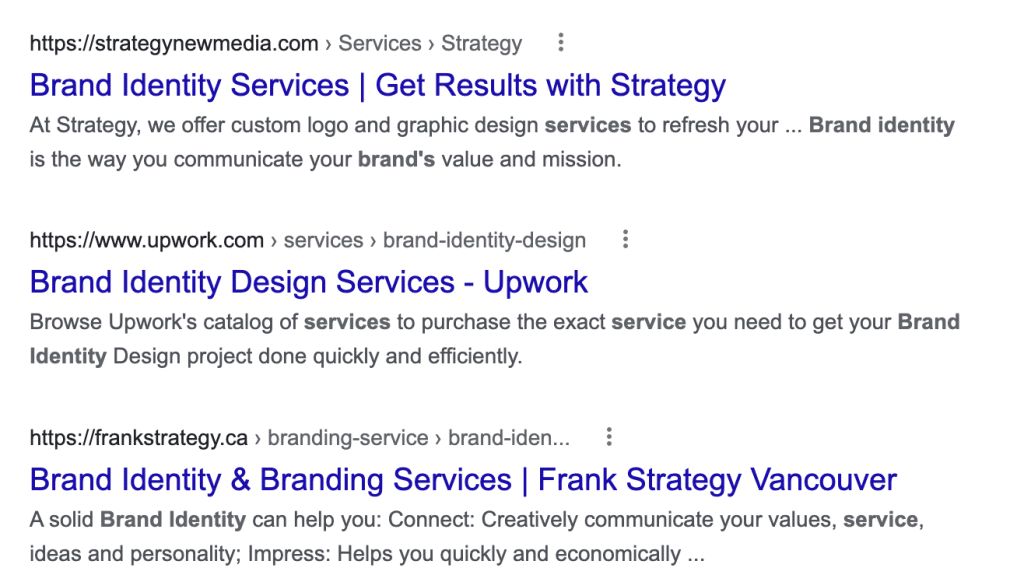
Content for commercial intent should tell about a particular brand or product in a way that makes it attractive to the user – whether it’s a comparison with something, a detailed review, or something else. Also, it’s a good idea to fit in a call to action to convert a portion of the traffic.
2. Use Tools for Insights
Look for similar keywords to understand the topic in more detail. To do that faster than manually searching for dozens of keywords, you can use specialized keyword research tools. For example, the SE Ranking keyword suggestion tool lets you find similar keywords in bulk. It will also help you to understand what the people who are searching for your main keyword are looking for.
After that, you can view the SERP right in the app for each keyword. Do a quick analysis of search results for similar keywords and incorporate the findings into your content strategy.
3. Pay Attention to Other Information in the SERP
When you’ve analyzed your main and supporting keywords, look at other information on the SERP, like featured snippets. Featured snippets are pieces of content that Google considers as perfect answers to the search intent, so studying them is essential for search intent optimization.
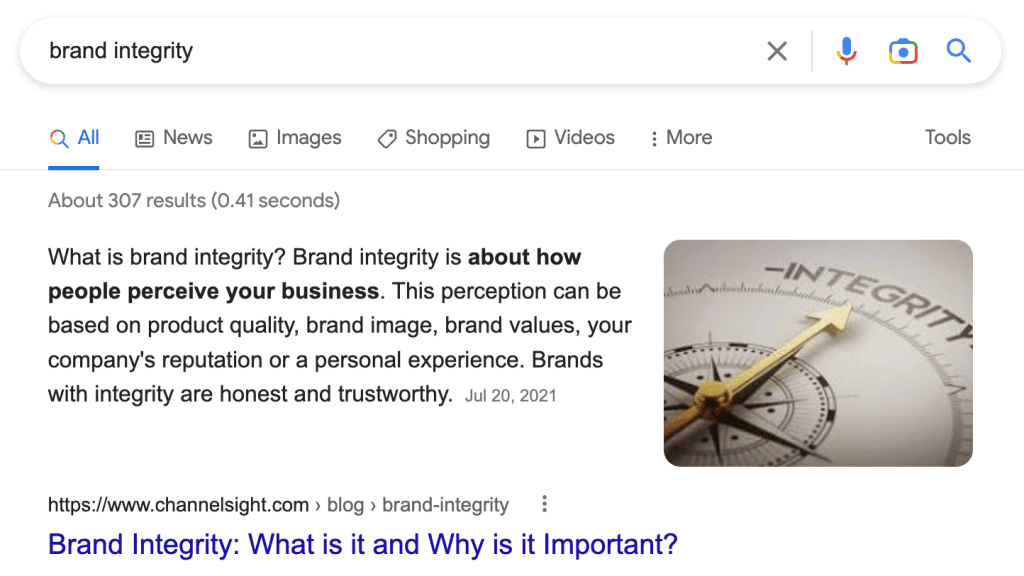
If a search query doesn’t have a featured snippet, you can try to rank for it yourself! It’s likely to bring more traffic to your page as it is displayed before the rest of the organic results.
Studying the people also ask section is a good source of ideas for working with content for informational intent. People who search for your main keyword probably also want to know about the things mentioned there, so why not bring them up in your content?
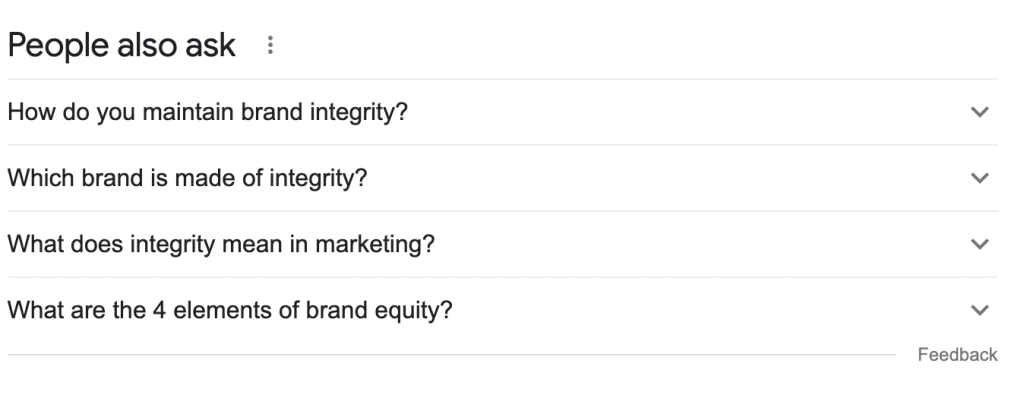
Checking out search ads for a particular keyword can help you understand how commercial it is. If four ads are targeting that keyword, chances are the traffic converts well, and you can add a CTA to the content.
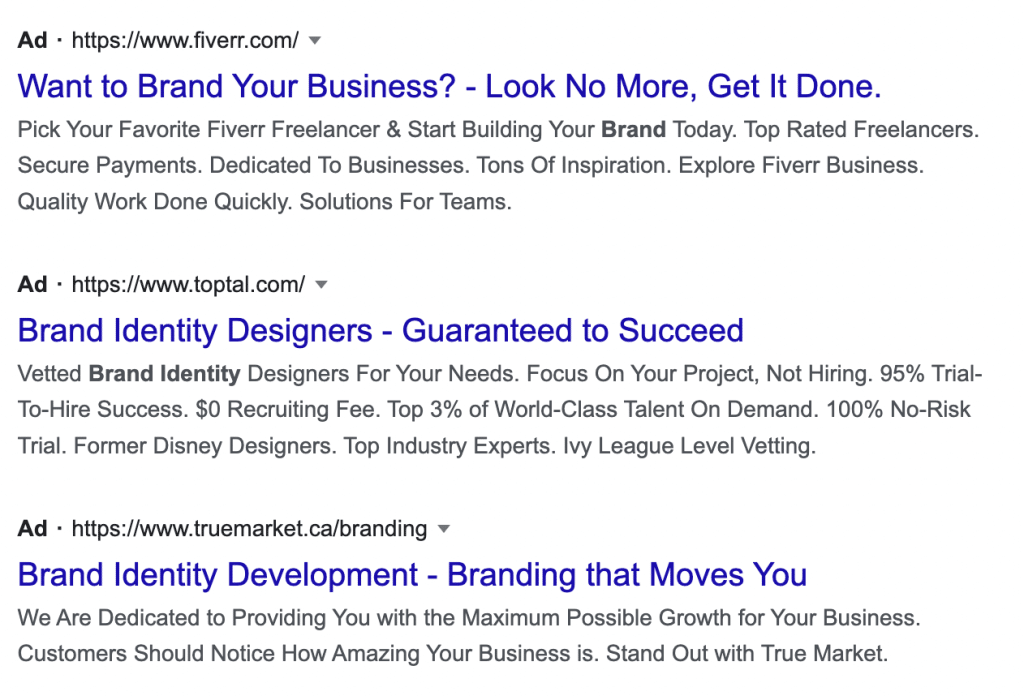
How to Match Your Content to Search Intent
Creating content for search intent and closely matching what users are looking for can differentiate your website from the competitors. Here’s how you can further incorporate the results of your search intent analysis in the content strategy.
Consider the Buying Cycle
You should first consider the buying cycle stage that a particular user intent corresponds to. For instance, transactional intent corresponds to the latest stage of the sales cycle, so you should create your content accordingly.
Transactional keywords require standard sales practices plus a bit of optimizing the meta description and title for the main keyword. Analyze well-performing sales pages and think about what your customer expects to see — products & pricing, detailed descriptions, clear purchase steps, or a Q&A section. That’s what probably answers the search intent.
Most informational articles attract people who are in the awareness stage of the sales journey. You can’t bombard the user with sales pitches and expect a high conversion rate. What you need to do here is match the search intent perfectly and make the user happy. Use the findings from your search intent research, like the topics covered under a particular keyword and keyword suggestions, to answer every question a user may have about a topic.
You can try to retain users by suggesting further reading at the end of the article or offering them to subscribe for content updates.
With informational keywords that may be a bit more commercial in nature, you can afford to do more self-promotion to increase conversion. Users who search for “social display ads” are probably interested in learning more about the topic but may also be interested in related services. In this case, you can leave a CTA at the end of your content piece like War Room Inc did here.
It’s fair game to incorporate sales tactics into the content piece you’re working on regarding commercial intent keywords. Search queries like “how to hire an advertising agency” or “best advertising agencies in Vancouver” are commercial in nature — a user is looking for information about the investment they’re about to make.
While you should definitely practice due diligence and honestly cover the topic, it’s only fair that you talk a bit about your own company in the content piece as well.
Consider the Content Format
Content research should give you a general idea of what users who search for a keyword want to see. For instance, people interested in examples of advertising probably want to see examples instead of simply reading about them. In this case, your content could benefit from more visuals.
Many search queries, especially how-to’s, may have videos in the search results. This can signal that your blog content can benefit from adding video content because it is what users are interested in.
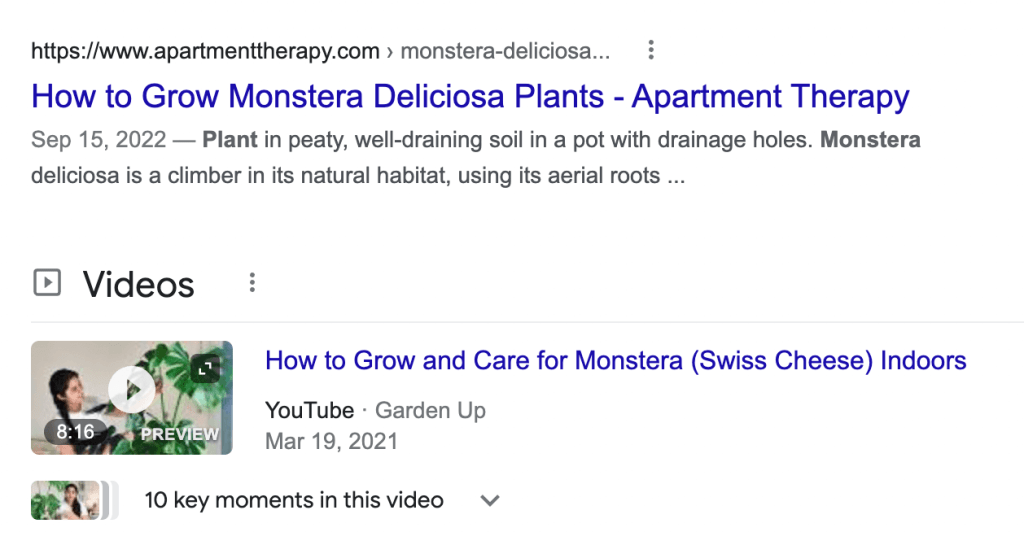
Even if you don’t think YouTube is a good marketing channel, you may consider starting a video series that can be posted on the blog with a transcript. Since it’s a large investment, only consider doing it if you see a lot of search results pages with videos for your main keywords.
Compelling Metadata
Metadata like titles and meta description tags are crucial for SEO because including your main keywords in them is a straightforward signal to the search engine what the page is about. There’s also search intent optimization value in metadata.
A meta description provides you with 160 symbols that can be displayed on the SERP. Treat it like a tweet to entice users to click on the page.

Use your understanding of user intent to convey to the user that they will get what they’re looking for. But remember that Google can now replace the description you provide with a text snippet it considers to be more relevant. For example, this can happen when a piece of content targets multiple long-tail keywords and its description covers the main keyword. For other keywords, Google can show a part of the text relevant to those keywords.
Implement Structured Data
Using structured data is essential for product pages with transactional intent, as you can add important details like rating, availability, hours of work, etc. This way, the user will have basic information about your business right in the SERP and may be more likely to click on your page.

Companies that sell services may also add a rating if it applies to the industry. You can also add navigational links with metadata, like in the example below.

This can be useful for informational search intent optimization as well. By adding structured data to your Q&A section, you can get expanding navigational links on the page that readers can see on the SERP.

You can add structured data to your pages using Schema.org, Google’s structured data markup helper, or a WordPress plug-in for structured data markup.
Optimizing Content for Search: Next Steps
Pick several content pieces stuck on the second or third page on Google and go deep into search intent on them. Try to apply the steps described above to those pages, and if you see the conversion metrics go up, you’ve got your answer.
An important tip that can significantly streamline your progress is not to treat optimization as a one-off job. Come back after a while to the pages you’ve optimized to analyze them again, add new relevant keywords, and update the content. Not only is it a good practice to catch past mistakes, but Google also loves when content is being updated constantly.










